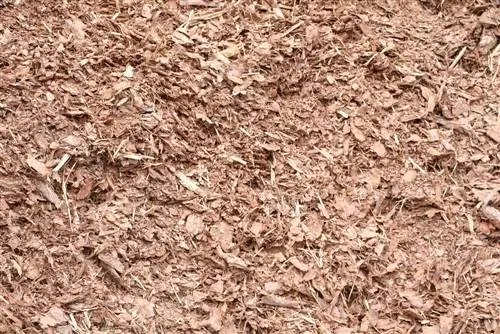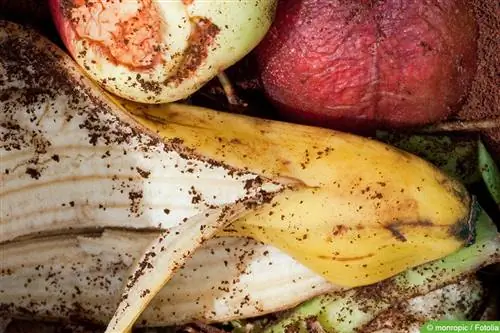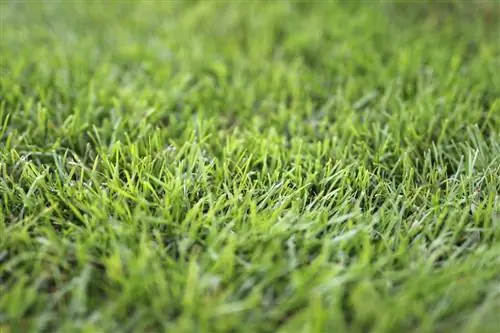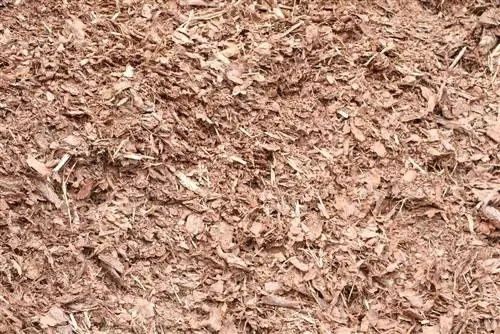- Author admin [email protected].
- Public 2023-12-17 03:39.
- Last modified 2025-01-24 12:45.
We want to get more and more out of our plants. Richer green, more lush flowers and tasty fruits in abundance. In order for this project to be successful, the soil must, among other things, be in optimal condition. We're happy to help, with bark humus, for example. The material made from softwood bark is said to have many good properties. We explain what the gardener and his plants can do with it.
What is bark humus?
Bark humus is a substance that can be used in the garden. It is made from crushed and then fermented softwood bark. Fermentation is comparable to composting, which many gardeners are very familiar with from their own experience. The shredded bark must go through this process so that unwanted, growth-inhibiting ingredients are broken down before it can be used in the garden.
- is made in this country from spruce and pine bark
- some nitrogen is added
- has a fine grain size of 0-15 mm
Tip:
You can buy bark humus in garden shops everywhere. It is often already mixed into special plant soils and does not need to be added separately.
Properties of bark humus
Since bark humus is obtained from organic material, numerous nutrients are released during decomposition. The only component, nitrogen, which does not occur naturally in sufficient quantities, is often added during fermentation. The bark humus also has some useful physical properties. Thanks to its medium and large pores, it can absorb oxygen and water well. Both are elements that are needed in the soil by both our plants and beneficial soil organisms.
Attention, risk of confusion
Bark mulch is another word that is often used in connection with gardening. But that means something different. Bark mulch is also made from softwood bark and is much coarser. But the grain is not the only difference. Bark mulch is not fermented and still contains tannins, resins, phenols, tannins and waxes. They protected the tree from pests, but in the garden they have a growth-inhibiting effect on the plants. This property is welcome when mulching. But in the soil where our plants are supposed to thrive, these substances are essentially “counterproductive”.
- with bark mulch you only mulch
- the soil is improved with bark humus
Even if the bark mulch is cheaper, it should not be used where bark humus is appropriate due to its growth-inhibiting properties.
Bark humus brings this benefit
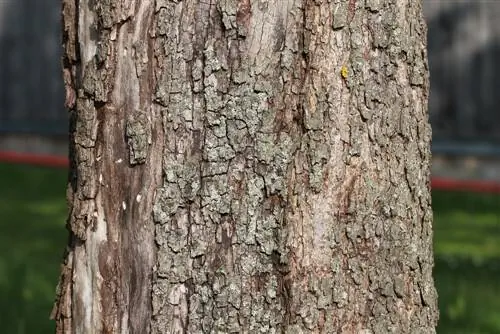
Due to its properties, bark humus is mixed proportionally into various plant soils and also applied specifically to beds to improve the soil. This is what to expect from him:
- Nutrient supply
- Soil revitalization
- Improving water holding ability
- Increase in oxygen levels
- Weed suppression
The individual points are explained in more detail below.
Nutrient supply
Bark humus contains plenty of plant nutrients, which it gradually releases. That's why it's ideal for the long-term care of plants. Among other things, it supplies our green plants with the following growth-promoting substances:
- Potassium
- Phosphate
- Nitrogen
- Trace nutrient content such as manganese etc.
Bark humus also contributes to stabilizing the soil pH value.
Soil revitalization
The bioactive bark humus offers soil organisms a habitat that is ideal for them to thrive. That's why soil life can be specifically and sustainably improved by adding bark humus. Every well-informed gardener knows that he althy soil life is also good for our cultivated plants because they have loose soil and a good supply of nutrients. Bark humus can fulfill this vitalizing function in both heavy clay soils and sandy soils.
Improving water holding ability
Anyone who has very sandy soil in their garden will know the problem: rainwater and irrigation water, no matter how abundant the quantities are, quickly seep into deeper layers. The sand cannot absorb and store the water. As a result, many plants are only supplied for a short time, and shallow-rooted specimens in particular soon find themselves without supplies. Bark humus is an ideal addition to sand because it holds water well. Both combined result in a loose, permeable soil that does not dry out too quickly.
Increase in oxygen levels
Plant roots need oxygen and so do the microorganisms living in the soil. Bark humus has plenty of pores into which oxygen is absorbed. The coarser the bark humus, the higher its oxygen storage capacity. Its air capacity, including pore volume, is usually well over 20%, which is in the highest level and can be rated as very good. It increases the oxygen content of any soil, but is particularly beneficial in this regard for dense clay soil.
Application as a soil improver
If necessary, bark humus is usually applied once a year to improve the soil for the subsequently cultivated plants. At the same time, they are provided with a starting supply of nutrients.
- Supply takes place early in spring
- when preparing the vegetable beds
- alternatively during the growing season
- 0.5 to 1 cm thick layer is applied over the surface
- this corresponds to around 5 to 10 l per square meter
- then the humus is worked flat into the earth
Operation against weeds
As a rule, the coarse-grained and unfermented bark mulch is spread in the root area of plants, where, among other things, it ensures that no weeds see the sunlight. This is also due to the growth-inhibiting ingredients that are still dormant in it. However, these substances are a problem with shallow-rooted crops because they are not spared from the growth-inhibiting effect. In these cases, bark humus can be used as an alternative.
- Bark mulch is usually scattered under bushes and trees
- Bark humus can be used anywhere in the garden
- in vegetable, perennial and flower beds
- a layer several cm thick is spread
- during fermentation, the harmful substances were decomposed
The effect of bark humus as a weed suppressant only comes from the thickness of the layer, since unlike bark mulch there are no growth-inhibiting substances. Due to its higher price, it is only used specifically where the use of bark mulch has disadvantages.
Addition to plant soil
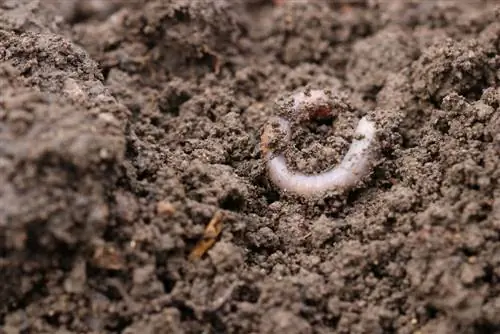
If you plant shrubs and trees, you can add up to 30% bark humus to the potting soil. It loosens the soil, provides nutrients, improves oxygen supply and keeps the soil moist. These are ideal conditions for the planted crop to take root quickly and well, which is clearly and pleasingly visible in the above-ground growth. Purchased plant soil usually already contains an appropriate proportion of bark humus, which can be between 30 and 60%. The other component is usually peat. You can easily use these soils for the garden but also for container planting.
Tip:
After using soil with a bark humus content, be cautious or sparing with fertilizers so as not to over-fertilize the plants. Potassium and phosphorus in particular are abundant in bark humus.
RAL quality mark
When buying bark humus, look for the RAL quality mark. Extensive quality and testing regulations for bark humus ensure that goods with this seal offer high quality. Several chemical, biological and physical properties are put to the test beforehand. Bark humus without the RAL quality mark could contain too little nitrogen, which may only be noticed at home when the first plants show deficiency symptoms.

